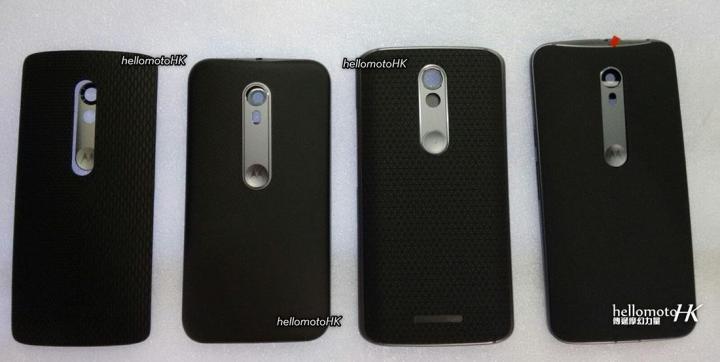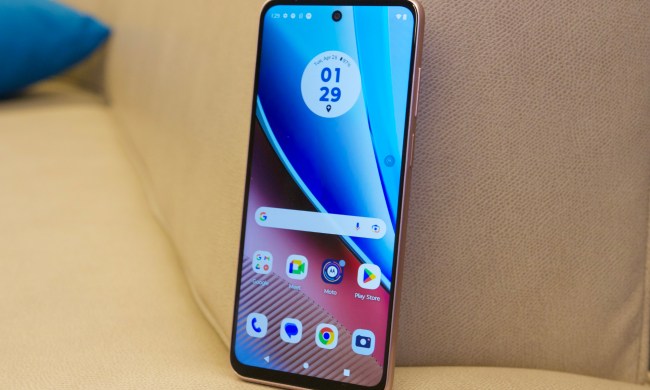
One of the FCC filings reveal a phone — codenamed “Kinzie” according to sleuths at Droid-Life, and potentially pictured above — that seems likely the spiritual successor of last year’s Droid Turbo. It measures 153.6×75.3 and 161.8mm diagonally, or slightly taller (by 10.11mm), wider (by about 2mm), and longer (by 7.31mm) than the Turbo, and features connectivity out the wazoo. Networking highlights include 802.11ac MIMO WiFi, LTE Advanced, and compatiblity with AT&T, T-Mobile, Sprint, and Verizon LTE bands. The last bit’s notable — with the exception of the Nexus 6, phones on Verizon typically don’t play nicely with other carriers.
That’s not all the FCC documents revealed about Kinzie. Motorola’s latest sports Qualcomm Quick Charge 2.0 hardware — the phone’s been tested with a standard AC plug, Motorola’s Turbo Charger, and a third, mystery power adapter — as well as with a microSD slot in some configurations.
Somewhat less exciting than Kinzie is a mid-range phone bound for Verizon. Its specs are harder to come by — the FCC filing shows a removable back cover and a glaring lack of 802.11ac WiFi — but the dimensions (it’s slightly smaller than the Turbo) and carrier exclusivity suggest an addition to Motorola’s enduring Droid lineup. It’s an admittedly peculiar one — Motorola hasn’t made an entry-level Droid phone since the Droid Mini in 2013, and it isn’t clear why the company would want to risk cannibalizing sales of its mid-specced Moto G — but it is a phone that might be positioned as an affordable, compact alternative to the Turbo for buyers inclined to the Droid series.
The dimensions of the third and final Motorola phone detailed in the FCC documents hint heavily at its identity — its measurements match those of the second-generation Moto G. Assuming it is, indeed, a new and improved Moto G, it’ll lack a few of the bells and whistles of its pricier cousins but will carry a subsequently lower price tag (last year’s Moto G retailed for $179 unlocked). The FCC tested the Sprint variant, but it’ll likely hit all four carriers at launch if history is any indication.
The FCC filings give no indication of when and at what price to expect new phones, of course, but the wait probably won’t drag on for much longer. Assuming Motorola adheres to its informal timeline, we’ll hear about the new phones in September at the latest.


